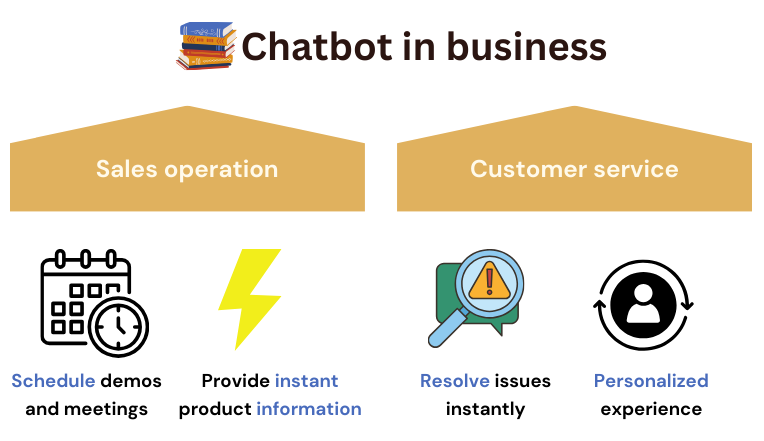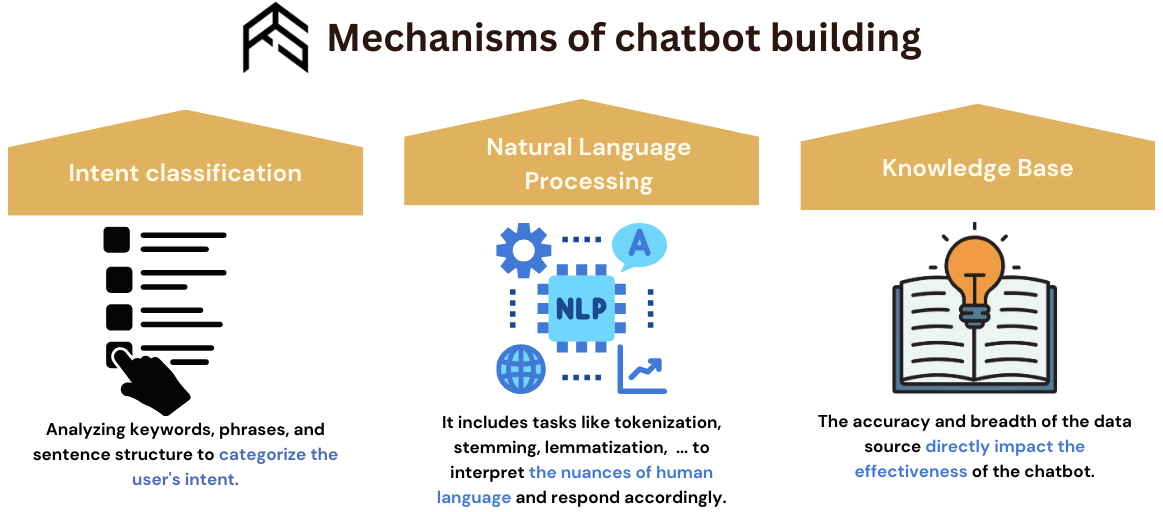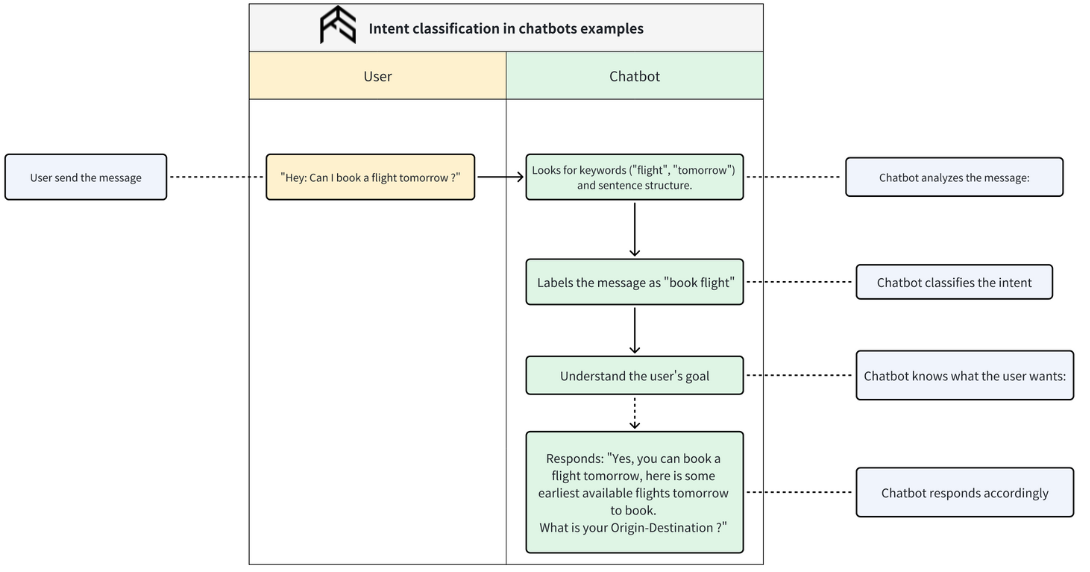What is AI chatbot ?
AI chatbots are computer programs that mimic human conversation using artificial intelligence (AI), primarily natural language processing (NLP) and machine learning. They go beyond simple scripted responses and aim to understand your intent and respond in a natural, helpful way.
Some examples of them are the notorious ChatGPT, Bard, Microsoft Copilot, ...

Why do many businesses consider chatbots as valuable assets nowadays ?

- The Lead Generator: A chatbot for customer service greets visitors, engages in conversation with them, addresses their queries, and directs them to the solution. This provides a personalized experience for each of your website visitors, thus enhancing your brand value and attracting more customers.
- 24/7 Availability: As human beings have deadlines to meet, shift timings to adhere by and more important tasks at hand, they cannot be addressing queries of your website visitors round the clock. Chatbot can act as an assistant around the clock to answer any question about your business. Besides that, it can help you capture crucial issues about your business operation that you didn't notice before.
- Cost-Saving: Chatbots in customer support also help you drive revenue by freeing up your employees to focus on more important tasks. The day-to-day tasks can be handled by your chatbot while your teams can focus on nurturing leads and closing sales.
Examples of chatbot in business

- <u>Sales operation:</u>
- Schedule demos and meetings: Automate appointment scheduling by integrating your calendar with the chatbot.
- Provide instant product information: Offer comprehensive product details and answer basic questions without requiring human intervention. This improves the buyer's journey and keeps them engaged in the sales process.
- <u>Customer service:</u>
- Resolve common issues instantly: Train your chatbot to handle frequently asked questions about orders, deliveries, returns, and technical issues. This reduces wait times and provides immediate support, improving customer satisfaction.
- Offer personalized support: Analyze customer data and tailor chatbot responses based on individual needs and preferences. This creates a more empathetic and helpful experience, fostering customer loyalty.
- Collect feedback and suggestions: Use the chatbot to gather valuable feedback from customers about their experience and product suggestions. This data can be used to improve your services and stay ahead of customer needs.
Mechanisms of chatbot building

- Intent Classification: This is the core mechanism that allows your chatbot to understand the user's goal or purpose behind their message. It involves analyzing keywords, phrases, and sentence structure to categorize the user's intent (e.g., booking a flight, asking for customer support, providing feedback).
- Natural Language Processing (NLP): This broad field provides the tools and techniques for chatbots to process and understand human language. It includes tasks like tokenization, stemming, lemmatization, named entity recognition, and sentiment analysis. These abilities allow the chatbot to interpret the nuances of human language and respond accordingly.
- Knowledge Base or Data Source Integration: Chatbots need access to relevant information to be helpful. This could be a specific knowledge base built for your chatbot, integration with existing databases, or real-time information access like weather APIs. The accuracy and breadth of the data source directly impact the effectiveness of the chatbot.
What is intent classification ? Why does chatbot need this technique ?
Intent classification in chatbots is like sorting mail, but for words! It scans a user's message, looking for clues like keywords and sentence structure. Then, it labels the message with its purpose, like "booking a flight" or "asking for help." This tells the chatbot what the user wants, so it can give the right response.
In essence, intent classification helps chatbots:
- Understand the underlying purpose behind a user's words.
- Like a bridge between human language and machine understanding, allowing chatbots to respond in a more helpful and meaningful way.
Here is a diagram of how intent classification works in action.

Conclusion
Building chatbots among businesses is becoming more and more popular, as it helps them schedule demos and meetings as well as provide instant product information automatically and fast. In terms of customer service, chatbots can collect feedback, provide support for customers 24/7 and greatly reduce the manpower needed.
Among chatbot building mechanisms, intent classification stands out by helping chatbots understand the underlying purpose behind a user's words in order to give meaningful responses.
Rockship is hopping on the bandwagon of building chatbots for business in Vietnam. With Rockship's Beta AI Assistant, people can get detailed quotations for Rockship's services within a few minutes of chatting. You can try our chatbot here, or schedule a call with Rockship's CEO if you want to have a chatbot for your business.



